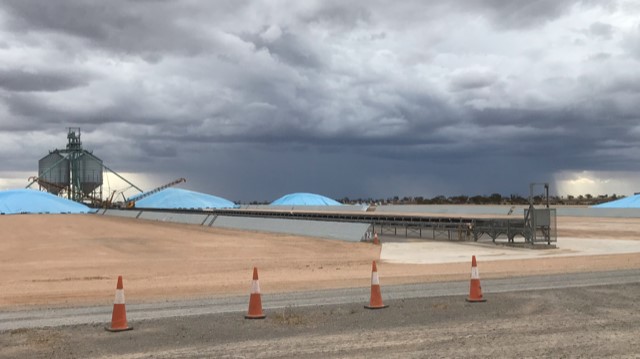The higher the bid, the further to fall
By Darcy Ingram
28th December, 2021
As December finally brought the welcome news of a reprieve from the rain across most of the East Coast, the increase in harvest activity unfortunately seemed to coincide with a decrease in values to the Australian grower. The grain marketing narrative throughout 2021 has been the well documented production issues in much of the Northern Hemisphere and the subsequent strong demand for Australian grain. This demand along with harvest delays and quality concerns saw local grain values rally to historically high values for wheat, barley and canola before falling in recent weeks. So what were some of the factors driving this market and what led to the recent drop?
From an overseas perspective, December’s US Department of Agriculture monthly report on World Agriculture Supply and Demand Estimates provided a mildly bearish input with an overall increase to wheat opening stocks and global production resulting in a drop in US futures and easing some supply concerns. Despite this, there is no question that demand for high quality Australian wheat and barley remains strong. The world has been closely following reports of our domestic harvest progress and our exports remain crucial to key importers and the global balance sheet. Similarly for canola, a disastrous production year in the Northern Hemisphere and with many months before we have an indication on next year’s crop saw Australian canola values hit record highs in most port zones before recently falling as much as $100-$200/mt in some parts of the country.
Locally, harvest delays across the East Coast saw buyers being forced to push bids higher with prompt demand as boats were due to be filled and headers were reluctantly parked. A resumption in harvest activity and high values saw a significant volume of grain delivered into the system and happily sold, quickly hitting the trade’s prompt accumulation requirements. It can’t be ignored that regardless of impacts to quality there is still a huge volume of grain yet to be harvested in the country, not to mention the massive amounts already delivered, that still needs to find its way to overseas destinations. The Australian export program has been turned on its head with the changes to the Australian crop profile and the trade and supply chain have a huge task ahead of them in shifting as much of this crop as possible prior to the second half of 2022. Canola is already being forced to price into much later months of overseas delivery and buyers will be cautious in their bidding, focusing on what they can execute rather than simply what is on offer.
A key piece of the puzzle from here will undoubtably be the timing and selling activity of the Australian grower. Buyers will still have significant demand throughout the new year and with farm inputs at sky-high levels, growers will understandably be chasing top dollar for their grain. It has certainly been a challenging year for many and with plenty still to be done before a well-earned break, I would encourage all to remain vigilant in your grain marketing and have a happy and safe New Year.
Wave of grain hits canola price

The unfortunate reality of the huge wave of grain that has hit the system in this short period of time is the effect it has had on cash markets.
Read MoreHarvest given its head

This past week has seen much of the East Coast return to its' usual December programming - warm and sunny - a welcome reprieve for those looking to complete winter crop harvest, along with summer croppers who recently became involved in aquaponics.
Read MoreWhat's next for canola prices

With much of the canola harvest in New South Wales finally appearing to be over the hill after ongoing rain delays, and the impacts to quality appearing to be not as bad as originally feared...
Read MoreFlooding rains and quality pain

The month of November in New South Wales is typically met with temperatures warming up, little to no rainfall and harvest gathering momentum across the state.
Read MoreWhen it rain it pours

We were warned it was going to be a wet harvest, but the optimist in us thought - "It'll be right, that's what they said last year."
Read MoreRainfall raises quality questions

Harvest has commenced in most parts of New South Wales as we approach the end of November and while there was some good progress made early on,
Read More